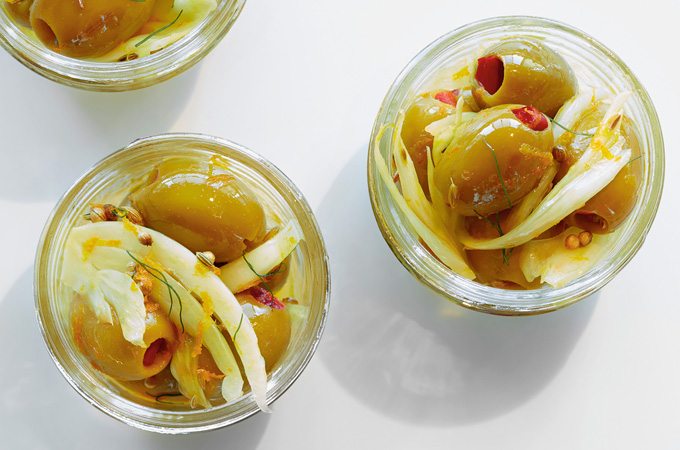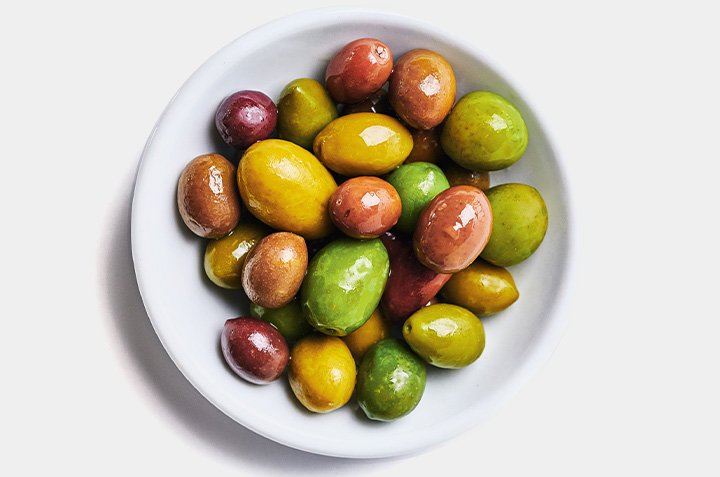1. Millennium tree
Olive trees have been grown and cultivated in the Mediterranean for thousands of years. They were first introduced on our side of the globe in the 18th century, in California, by Spanish missionaries. Today, the main producers are Spain, Italy, Greece, Turkey and Morocco. Each year, almost 3 million tonnes of table olives are harvested by hand, contrary to the olives that are transformed into oil.
2. Chameleon fruit
There are hundreds of olive varieties in existence, from small to very large, such as Cerignola, Mission, Kalamata, Picholine and Sevillano. When it comes to colour, it doesn’t pertain to the variety of olive, but rather its stage of ripeness. When an olive ripens on the tree, its colour gradually goes from green to dark violet, and then black. Its texture changes also: when you bite into a green olive, its flesh is firm, whereas black olives are more tender.
3. The transition
Fresh olives are sour and must be treated to soften their flavour. Salt, sodium hydroxide and water are used to extract oleuropein, the substance that gives olives their bitterness. The salt treatment takes many weeks, whereas a sodium hydroxide base requires less than 24 hours. Olives are then kept in a brine or in oil.
4. Black magic
The black olives that are sold in cans have nothing to do with olives ripened on a tree. They’re simply green olives treated in sodium hydroxide, aerated and agitated in a vat. The result? An oxidation reaction that quickly blackens the olives. They’re then canned in a brine that contains ferrous gluconate, an iron-based compound that sets their colour. Try them on bruschetta or in linguini with tuna!
5. Taste of sunshine
Much like their oil, olives contain good fats, like monounsaturated fats, a bit of vitamin E and antioxidants. Canned black olives? A bit of iron and, not surprising, lots of sodium. No matter which you choose, we don’t enjoy them solely for their nutritious qualities, but also, simply for the pleasure of heightening the flavour of our dishes. Whether in a snack, a cocktail or even in bread, olives will never let you down!

Appetizers
Olives with Orange and Fennel




